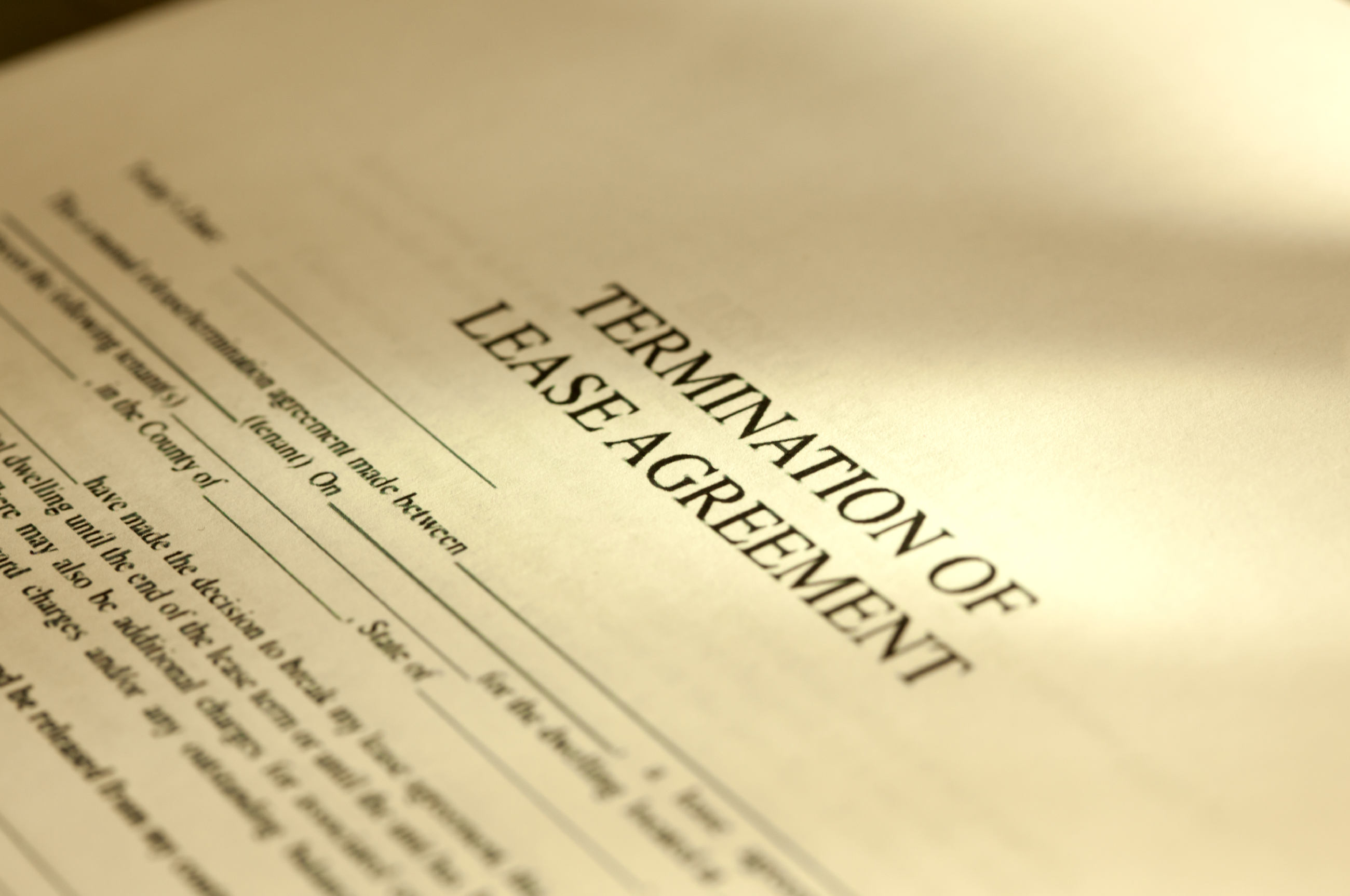Leases are legal contracts meant to provide financial security for both sides—property managers or owners on the one hand, and tenants on the other. Sometimes, though, either side may want out a little early. In a perfect world, everyone would avoid financial loss and lawsuits. “In those cases, only the attorneys win,” says real estate lawyer John Schepisi.
In certain situations, though, especially when rental inventory is tight, owners and their representatives are more likely to be flexible about breaking a lease earlier than planned. But even in sluggish markets, honesty on a tenant’s part and special circumstances may lead property owners to act compassionately and bend the rules.
In this article, we’ll look at the best ways all parties can reach agreements that leave everyone satisfied, first from the point of view of the property manager or owner, and then from the perspective of the tenant. In addition to Schepisi, we’ve also consulted real estate attorney Zachary D. Schorr and Francine Bass, Director of Associate Development at Altman Management Co.
When a Property Manager or Landlord Wants to Break a Lease
The best way to ensure your ability to break a lease is to put an early lease termination agreement into the contract. Also known as a termination provision, this agreement lets you buy out the tenant’s interest for a specified dollar amount upon giving a preset amount of notice, says Schorr.
“Perhaps you give your tenants 30 to 60 days, return their security deposit (amount varies by state), and cover their moving expenses. There doesn’t have to be a reason for doing so if this has been written into the lease. And if tenants don’t move, you have the right to begin eviction proceedings,” he says.
Schepisi says that in New York and Northern New Jersey, it can be difficult to force out residential tenants who don’t want to move, even though it’s a landlord’s market in these regions nowadays. Proceed cautiously, and know the rules in your local area and state.
Even when everything is covered in a lease and a tenant moves out willingly, attorneys still recommend both sides sign an early lease termination agreement or release and surrender agreement against all claims, which provides extra protection against future problems, Schepisi says.
Schorr adds, “You don’t want tenants claiming they were improperly evicted or discriminated against, and coming back to sue for retaliatory eviction and seeking their attorney’s fees.” Tenants have become incredibly savvy by causing all sorts of stays and delays by filing for bankruptcy and asking for a jury trial. “In the end you may be successful, but you’ve extended the time of the rental and often without monthly rent,” Schorr says.
In addition, Schorr suggests never breaking a lease by taking physical possession of a property without the tenant’s permission or a court order. This is called a self-help eviction. “You risk being held responsible of depriving them of the use of the premises. They may file damages against you, even if they’ve stopped paying rent,” he says.
If tenants stop paying rent, in many states, the typical process involves giving tenants three days’ notice in writing, and then beginning eviction on the fourth day. Of course, the actual process differs from state to state, and it can take a while. In California, for example, it can be as long as four to six weeks. “Out-of-court resolution is always best,” Schorr says.
If the tenant or a pet makes too much noise, brings in additional roommates, or rents out the property without approval, first put your complaint in writing, and if problems aren’t rectified, then start eviction proceedings after giving proper notice, Schorr says.
When a Tenant Want to Break a Lease
If a tenant wants to break a lease, the strength or weakness of the market typically proves to be the major factor. “If rents are going up and there’s little inventory, letting them out can offer a landlord or property manager the chance to raise rents,” says Schorr. But when a tenant breaks a lease, the property manager or owner has a duty to mitigate damages by trying to rent the property as quickly as possible, Schorr adds.
In the case of Altman Management Co., based in Boca Raton, Florida, which operates more than 4,000 units in that state and Michigan, Florida residents have a choice of lease termination options, says Francine Bass, Director of Associate Development. When signing a lease, a resident can agree to terminate the contract in advance and pay liquidated damages, which may not exceed an amount equal to two months’ rent. Or the tenant can give the company permission to re-rent the apartment as soon as the resident provides written notice.
The Altman Development Co. gives tenants a choice of options for easily cancellation at the time of leasing, says Bass. They can agree to cancel their contract if they notify 60 days in advance and pay liquidated damages equal to two months’ rent. Alternatively, they can choose the riskier resolution and give the company permission to re-rent as soon as they notify them want them to leave.
“If the market’s strong, they may have to vacate quickly. If soft, it could take a while and cost them more,” Bass says.
Even in a down market with a lot of inventory and decreasing rents, tenants may not find themselves out of pocket if they’re honest. “Tenants should explain if they need to move for another job, are sick, or have lost a job and can’t afford to keep paying,” Schorr says.
Of course, there still may be consequences for tenants, such as not getting back their entire security deposit, paying for an ad to re-rent the unit, hiring a broker, or having the unit painted or carpeted, depending on its condition. Still, so much depends on the attitude of the landlord, and how much notice the tenants give, says Schepisi.
When a trial seems imminent, some compromises you originally hadn’t considered may become viable options. “The value of getting the tenant out as expeditiously as possible is usually more important than a drawn-out trial,” Schorr says.
In these cases, too, tenants should request a written lease termination letter that says they’re delivering the property back to their landlord to prevent owner or property manager from seeking additional rent or damages later, for whatever reason, Schorr says. “The lease termination triggers the landlord’s duty to mitigate and find a new tenant,” he says.
What is your take on breaking leases early? Do you plan for these scenarios by including special language in your leases? And are there circumstances in which you’re more open to letting a tenant out of a lease?
We’d love to hear about your approach. Leave a comment below and let us know what your policy is.
Read more on Uncategorized

